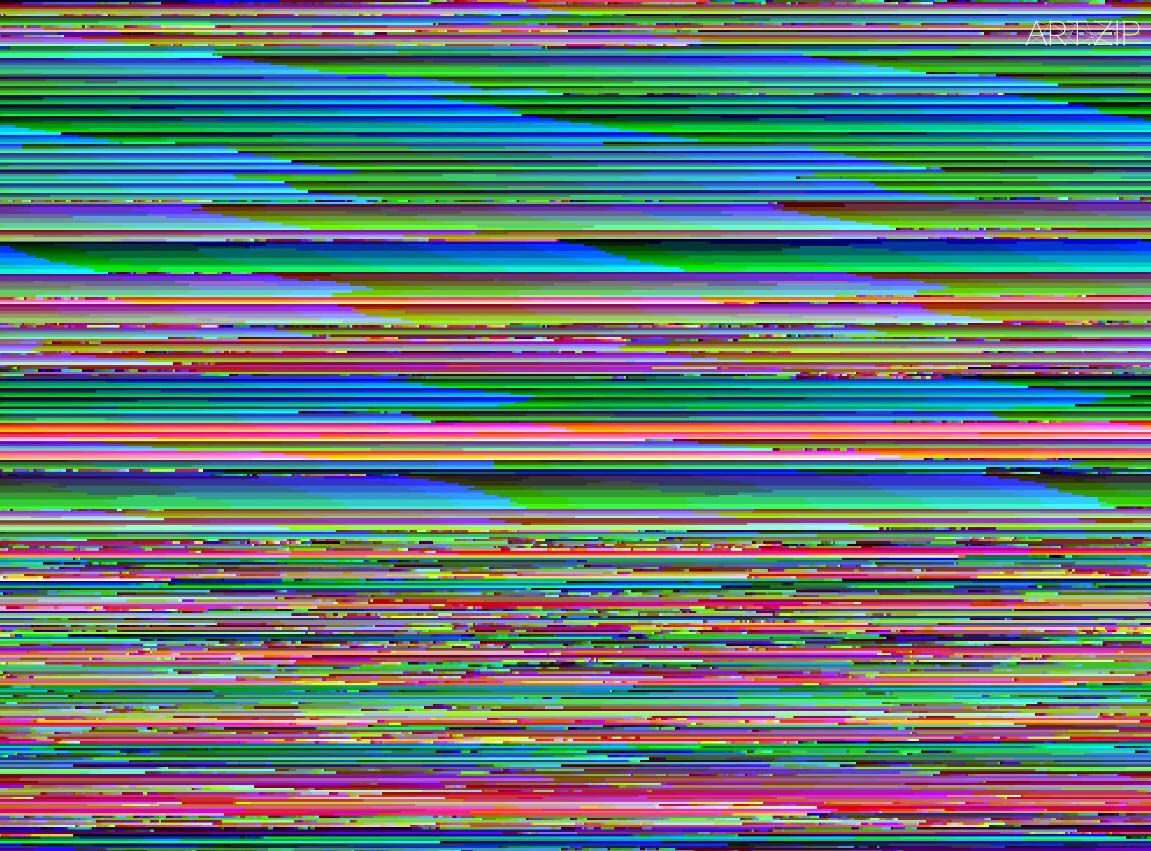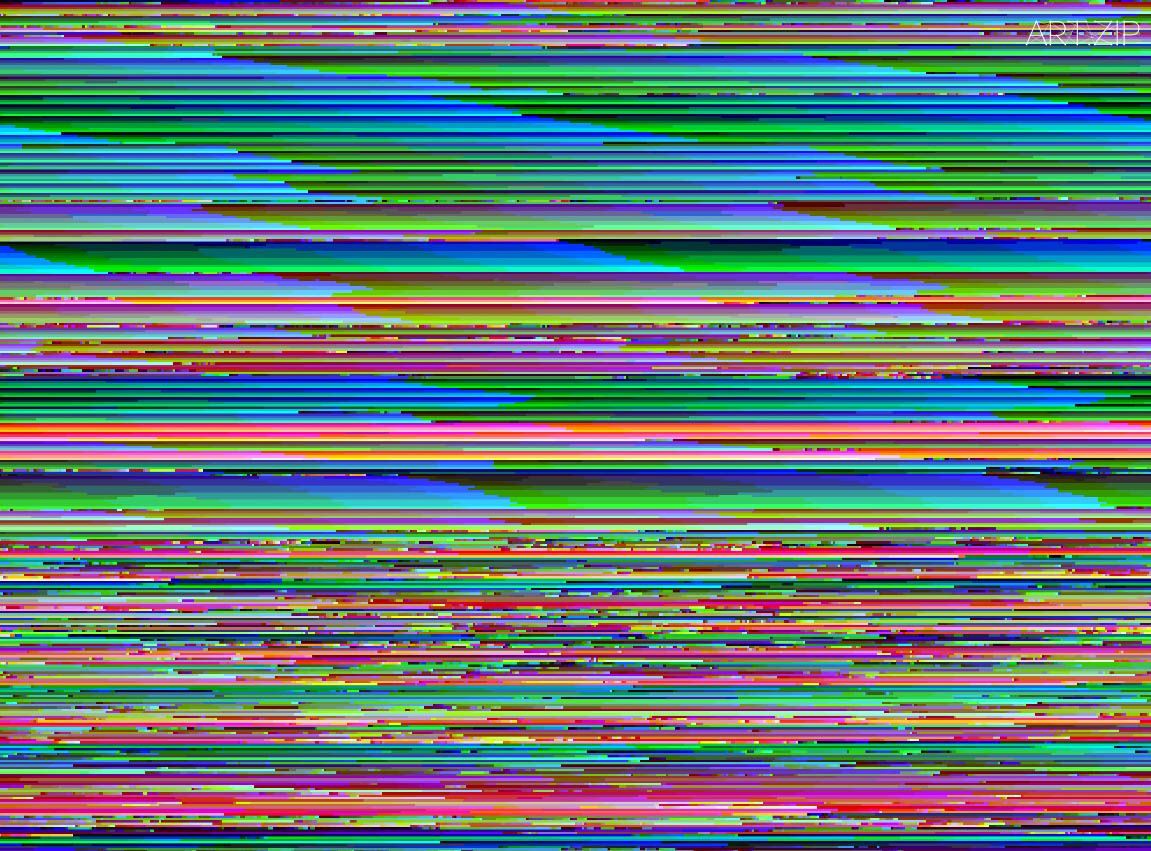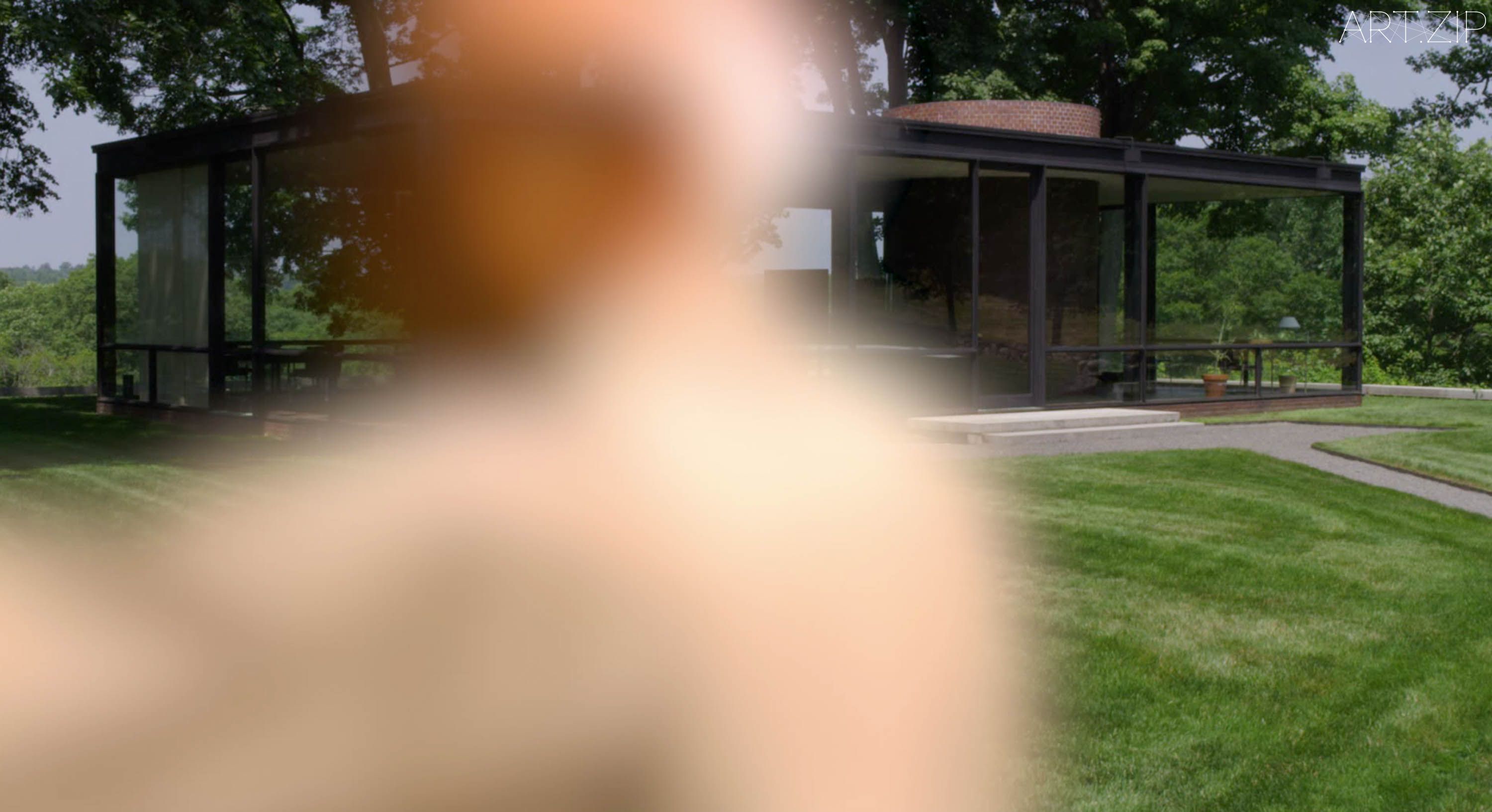
Glitch 失靈
Text by 撰文 x Andrew Witt
Translated by 翻譯 x Jay 賴俊傑
Edited by 編輯 x Michelle Yu 余小悅
Glitch is a slang term. The earliest usage of the term was in the 1960s among astronauts to describe a technical hitch. The term signaled an unexpected malfunction. Astronaut John Glenn first used the term in 1962 in the book, Into Orbit, on the first human spaceflight program of the United States. For Glenn, a glitch represented a spike, surge or sudden change in voltage experienced in an electrical current. A surge usually occurred when a circuit suddenly underwent a new strain. In a technical context, the word was used in alternating terrains: at times, it was mobilised to describe a surge in electrical current; in other instances, it was deployed to describe a ‘spurious’ electric signal.
Glitch (脈衝波干擾)是一個俚語詞,最早出現於1960年代,被宇航員們用來描述技術故障。這一術語被用來指代意外故障。宇航員約翰·格倫(John Glenn)首次在1962年出版的《進入軌道(Into Orbit)》這一本關於美國第一次載人航空項目的書中使用了該術語。對於格論來說,Glitch代表一種在電流中產生的尖刺、洶湧或驟然的電壓變化。這種突然的湧動通常在電路經受新應變時產生。在和科技有關的語境中,這一詞彙被用來描述領域的交替:有時它被調用來描述電流出現的驟變;在其他情況下,它還被用來描述「虛假」的電子信號。
To experience a glitch in the 1960s was to expose oneself to an unexpected, if not annoying interruption within an operating system. A glitch was understood as an obstruction of sorts. The term was defined at the time as a current’s ‘spurious’ straying from the source. The use of ‘spurious’ to describe an electrical current seems contradictory. The meaning of ‘spurious’ oscillates between the fraudulent and the deceptive. How can an electrical current be either? Later in the 1960s, the word glitch was repurposed as concept — brought back to earth from the lofty heights of astronauts — to describe the phenomena of low-frequency interference within a television’s picture. A glitch was experienced by most as an encounter (now obsolete) where a narrow bar of electrical current moved vertically across a television’s screen.
在1960年代,經歷過glitch就等於把自己暴露在一個操作系統的意外(或麻煩的)干擾中。Glitch被某種程度上理解為一種阻礙。該術語在當時被定義為電路中能源的「虛假」噴發。使用“虛假”來描述電路似乎是矛盾的。“虛假”介乎欺騙與迷惑之間。一股電流怎麼能被如此形容呢?在1960年代後期,glitch被改造為一種概念——從宇航員的天馬行空被帶回到現實的地球上——用來描述一種電視圖像出現的低頻干擾現象。在Glitch被大多數人認為是一種偶遇(現在已被廢棄),即窄帶電流垂直地滑過電視屏幕。
In an art historical context, one of the first uses of the term came from the photographer Robert Cumming. In the 1970s, the artist had described his project as premised on a type of ‘perceptual glitch’. In 1973, Cumming produced a curious photographic series: Ansel Adams Raisin Bread (1973), where the artist re-staged an anecdote, that the he had heard second-hand, about Ansel Adams’s commercial work for a local bakery in the Bay Area. According to one story, Adams was commissioned to compose, in his words, a ‘compelling photograph’ of raisin bread — “bread,” to cite one historian, “such as could not be found in nature.” Dissatisfied with the way in which the actual raisin bread looked and photographed, Adams replaced the real raisin bread with smooth-textured white bread. On the bread’s surface, dried raisins were added with tweezers and the white bread was stained with a brown lacquer.
在藝術史語境中,攝影家羅伯特·卡明(Robert Cumming)是最早的使用者之一。在1970年代,這位藝術家認為其藝術項目預先提出了一種“感性glitch”。1973年,卡明出品了一組稀奇的照片系列:《安塞爾·亞當斯·葡萄乾麵包(Ansel Adams Raisin Bread )》,藝術家重新佈置了一個軼聞,他聽人傳言說安塞爾·亞當斯在灣區为當地的麵包店創作了一組商業廣告作品。根據一種說法,亞當斯接受委託創作一幅“讓人垂涎的葡萄乾麵包照片”,引用一位史家的說法,這個“麵包”是“無法在大自然中找到的”。由於對葡萄乾麵包實際的和照片中的樣子不滿意,當斯用質地光滑的白麵包把葡萄乾麵包替換掉了。他用鑷子把葡萄乾嵌在麵包的表面,而且還用棕色油漆為白麵包著色。

Robert Cumming, Ansel Adams Raisin Bread, 1973
Cumming’s restaged scene depicts a before-and-after sequence. On the left, a collection of food-stuffs find themselves scattered across a low standing table: a box of raisins, a bowl of large raisins in the foreground, a bowl of small raisins in the background, a loaf of white bread, tweezers, and two slices of white bread placed against a group of tropical palms and a brick floor. On the right, the same scene: a box of raisins, a bowl of large raisins (in reduced scale) , a bowl of small raisins (again, slightly reduced), a loaf of white bread, tweezers, and two slices of white bread in the middle of the photograph, now with twenty odd raisins placed on the surface of the bread. For a four-page essay published in Artforum in 1981, critic Charles Hagan interpreted Cumming’s strategy as a method working at the extremes of meaning. Cumming’s ‘glitch,’ in Hagan’s words, was akin to a willful child testing a sore tooth with their tongue. Cumming folded systems of comprehension back on themselves to contradict apparently distinct categories.
卡明重塑的場景照展現了當時的製作過程。在左邊,一堆食材被散亂地分布在一張矮桌上:一盒葡萄乾,前景是一碗大葡萄乾,後面是一碗小葡萄乾,一條白麵包,鑷子,兩片白麵包,背景是一排熱帶棕櫚樹和磚地。在右邊,同樣的場景:一盒葡萄乾,一碗大葡萄乾(數量稍有減少),一碗小葡萄乾(同樣有所減少),一條白麵包,鑷子,畫面中間是兩片白麵包,只是現在麵包表面添加了20顆奇怪的葡萄乾。在1981年的《藝術論壇(Artforum)》上,批評家查爾斯·黑根(Charles Hagan)發表了長達4頁的文章,他把卡明的策略解讀為一種致力於推敲意義極限的方法。卡明的“glitch”,用黑根的話來說就類似於一個任性的孩子用舌頭來檢驗一顆疼痛的牙齒。卡明把理解體系向後折疊,來反駁明顯不同的類別。
Today, the concept of a glitch has gained added currency when speaking to the fluid boundaries of contemporary art and technology. In the present, the concept transits in the terrain of digital art and post-internet art. A glitch is neither radical nor revolutionary, most often it is just an annoying occurrence. For some, the concept is a clumsy term, merely interpreted as a passing fad for electronic music. For others, the term represents a ‘floating signifier,’ burdened with an overflow of meaning. Even artist Amalia Ulman, who is known for her four month long Instagram performance, Excellences & Perfections (2014), which plays with the glitches in social media where real and fictional identities contaminate one another. In the contemporary moment, a glitch appears not as a condition to be experienced per se, but rather as a structuring principle.
今天,glitch的概念在界限日漸模糊的當代藝術和科技領域中流通開來。在當下,這一概念已被轉移至數字藝術和後網絡藝術領域中。Glitch既不激進也不具有革命性,大多情況下它只是一種煩人的發生。對於某些人來說,這一概念只是一個拙劣的術語,只是被解讀為一種過氣的電子樂流行風潮。對於另一些人來說,這一術語代表著一種“飄忽不定的能指”,承載了過多的意義。甚至是以長達四個月的Instagram表演《卓越與完美(Excellences & Perfections )》(2014)而出名的藝術家阿瑪利亞·烏爾曼(Amalia Ulman)也在現實與虛擬空間互相染指的社交媒體中玩味glitch。在當代,glitch的出現不是一種被體驗的狀態,反而是一種結構性原則。
In contemporary criticism, a glitch can refer to an array of phenomena: interruptions, malfunctions, hesitations, blockages, occlusions, accidents, and similar phenomena, all occurring at the level of the image, sound, or system. For others, the term has a distinctly materialist condition: all that debris, residue, scrap, junk, clutter and other odds and ends that populate the edges of images, sounds or systems. The concept appears not restricted to purely digital formats, but incorporates encounters between analog and digital, analog and analog, and digital and digital formats.
在當代批評中,glitch還可以指一系列的現象:干擾、故障、猶豫、阻塞、閉塞、意外,以及類似的發生在圖像、聲音或系統中的各種現象。對於另一些人來說,這一術語帶有明顯的唯物主義色彩:所有的殘碎、殘留、殘餘、垃圾的各種零星都盤踞於圖像、聲音或系統的邊緣。這一概念還不局限用於數碼格式的作品,還含括了模擬和數碼、模擬和模擬、數碼和數碼格式之間的各種發生。

1-1, 1999, Lisa Jevbratt
In the dubiously indistinct terrain of contemporary art, where concepts are switched from one outlet to another, a series of questions confront us on the nature of a glitch in the present: What do we talk about when we talk about a glitch? What are a glitch’s conditions? What is its pre-history? Where is the term glitch going?
在難以明確界定的當代藝術領域,概念一個接一個地出現,於是我們正面臨一系列關於glitch本質的問題:我們在談論glitch的時候都在談論什麼呢?glitch的狀況是什麼?它的史前史是什麼?glitch這個術語何去何從?
“There is a glitch in the matrix,” Carrie-Anne Moss declares to Keanu Reeves in the 1999 film The Matrix. In film, a glitch is read as an experience of dejà vu: the encounter of a stray black cat moving through a corridor as if on loop. Paolo Virno argues that when dejà vu occurs the perception of the present collapses and is confused with a memory. For Virno, déjà vu arises precisely when a past-form is figured in the present and is exchanged for a past-content that repeats. “We believe that we have experienced (or seen, heard, done, etc.) something that is, in fact, happening for the first time at the very moment.” In the Matrix, a glitch is the uncanny cipher of repetition; it signals a sudden transformation occurring in a system.
在1999年的電影《駭客帝國(The Matrix)》裡,凱莉-安·摩絲(Carrie-Anne Moss)對基努·李維斯(Keanu Reeves)說:“在數碼矩陣中有一個glitch”。在電影裡,glitch指的是一種幻覺記憶(既視感):就如遇見一隻黑色的流浪貓在走廊裡走來走去,彷彿是在一直循環。哲學家保羅·維爾諾(Paolo Virno)說,當這種幻覺記憶出現時,對當下的感知就會崩塌,而且會與記憶發生混淆。維爾諾認為,幻覺記憶恰恰出現在過去的某種形式在當下成型並且與一個段重復的過去相互交換的時候。“我們認為我們經歷了(或看到、聽到、做過等)某些實際上在那刻初次出現的事情。” 在《駭客帝國》中,glitch是一個神秘的重復解碼;它預示了在系統中的一種突變。
Although the digital image is commonly encountered through its jewel-like precision, this same image is beset by errors, malfunctions, and other interruptions. In one poignant conception, Hito Steyerl claims that the contemporary image is like the clone of Leon Trotsky walking around with an ice pick in his head. In this undead accumulation of matter, the contemporary image appears wrenched open and bleeding. The glitch is the effect of this icepick. “Images are violated,” Steyerl writes, “ripped apart, subjected to interrogation and probing. They are stolen, cropped, edited and re-appropriated. They are bought, sold, leased. Manipulated and adulterated. Reviled and revered.” To work with images in the present is to take part in this wrenching of image and object. In the realm of contemporary poetry and poetics, Nathan Jones labels this exchange as a type of ‘glitch poetics.’ “Our experience of media,” Jones writes, “is precisely — and perhaps uniquely — the experience of their failure.”
儘管數碼圖片的成像像珠寶一樣精準,但是看起來一樣的圖像也會被錯誤、故障和其他干擾所包圍。其中一個尖銳的構想來自希托·史泰耶爾(Hito Steyerl),她說,當代圖像就像腦袋上扎了碎冰錐的列夫·托洛茨基(Leon Trotsky)的克隆人在到處遊蕩。在這一不死之身上,當代圖像備受折磨、鮮血淋灕。Glitch產生的就是這碎冰錐的作用。“圖像被破壞了”,史泰耶爾寫道,“圖像被撕碎,遭受拷問和探查。它們被盜用、被裁剪、被編輯、被再次盜用。它們被買賣和租賃。它們被操縱、被摻假、被斥責、被敬畏。” 在當下使用圖片就勢必會參與這場圖像和客體的扭曲。在當代詩歌和詩論領域,內森·瓊斯(Nathan Jones)把這種交換標注為一種“glitch詩論”。“我們的媒體體驗”,瓊斯寫道:“準確地說——也許也很獨特——是一種是媒體失敗的體驗。”
This aspect of media dissonance is a recurring thematic of an art that incorporates a glitch. In the fall of 2015, Rachel Rose showed two films in London’s Serpentine Gallery: A minute ago (2014) and Palisades, Palisades (2014). In A minute ago, Rose’s camera meanders through Phillip Johnson’s glass house in New Canaan Connecticut. Drifting from the transparent-glass-exterior to the transparent-glass-interior, Johnson emerges on camera as if like an apparition. His body assumes the form of a pixelated-ghost. The camerawork is slick and seamless, yet Johnson’s body is less so. As a collection of pixels, Johnson’s body dissolves as quickly as he appears. Casting a sweeping glance over the modernist interior, the camera comes across the centerpiece of the Johnson House: Nicolas Poussin’s The Funeral of Phocion (1648).
這種媒體不和諧是glitch藝術作品裡反覆出現的主題。在2015年秋天,瑞秋·諾斯(Rachel Rose)在倫敦的蛇形畫廊(Serpentine Gallery)展映了兩部電影:《一分鐘前(A Minute Ago)》(2014)和《帕利塞兹,帕利塞兹(Palisades, Palisades)》(2014)。在《一分鐘前》里,諾斯的鏡頭緩緩移過位於康乃迪克州新迦南(New Canaan Connecticut)的菲利普·約翰遜(Phillip Johnson)的玻璃房。從透明玻璃的內部到外部漂移,約翰遜如同幽靈一般地出現在鏡頭前。他的肢體以像素化的鬼魂形式呈現。攝影技法平滑而無痕,即便如此約翰遜的肢體表現卻並非那樣。作為一堆像素,約翰遜的肢體快速消散就如他快速顯現一樣。用掃視形式錄制完現代的建築內部後,鏡頭移到了約翰遜別墅的中心擺設:普桑( Nicolas Poussin)的《福基翁的葬禮(The Funeral of Phocion)》(1648)。

Rachel Rose, Still from A Minute Ago. 2014
Poussin’s painting is a painting of expulsion: the removal of the ‘disgraced’ body of the Athenian general, Phocion, from the city center. The two men who are burdened with this task appear duty-bound: they look forlorn and cast their glance downwards to the ungrateful road ahead. Soon Phocion will be turned to ash. This picture is not melancholic: shepherds tend their sheep and conversations are had along the water’s edge. Only a man on horseback rides in haste at the picture’s right-hand margin. For a painting of death and exile, the scene appears overwhelmingly warm and cool, rather than cold and sepulchral. As her camera studies the painting’s surface, Rose cuts to a deer convulsing in an open field. The deer appears stuck in this interminable hell. Subsequently, the camera cuts to a freak hail-storm in the Ukraine. The scene is captured by jittery movements from a cellphone. As chunks of ice fall from the sky, beachgoers scatter this way and that and find shelter under inhospitably small umbrellas. A single voice speaks earnestly in emojis: “If we die — know that I love you ^_^”. In Rose’s case, the image is porous. Just as the Johnson’s ‘Glass House’ collapses the distance between interior and exterior, the world depicted in Poussin comes to speak to an unexpected hailstorm in the Ukraine.
普桑的繪畫是一幅以驅逐為主題的畫作:把“蒙羞的”雅典將軍福基翁的遺體從市中心移走。兩名承擔這一工作的男子顯得認真負責:他們看上去很沮喪,低頭看著那條絕情的道路。很快福基翁就會被燒成灰燼。這幅畫作並不憂鬱:牧羊人照看著他們的羊群在河畔聊天。唯有一名騎馬的男子在畫面的右側急馳。對於一幅關於死亡和流放的畫作,其場景卻顯得極為溫和冷靜,而不是陰森冷酷。當她的鏡頭給這幅畫特寫時,諾斯把畫面切換到一頭鹿在曠野中抽搐的場景。這頭鹿就像是被無盡的地獄所困一樣。接著鏡頭又切換到了烏克蘭的一場恐怖的冰雹。一個嚴肅的帶有表情符號的聲音說道:“如果我們要死——要知道我是愛你的^_^。” 在諾斯的個案中,圖像是千瘡百孔的。就如同約翰遜的別墅把建築的內部和外部瓦解了那樣,普桑筆下的世界則述說了烏克蘭那場意外的冰雹。
Where is the glitch in Rose’s work? In a sense, the glitch seems to perforate the entire system.
在諾斯的作品中glitch在哪裡呢?從某種意義上說,glitch似乎貫穿了整體。




